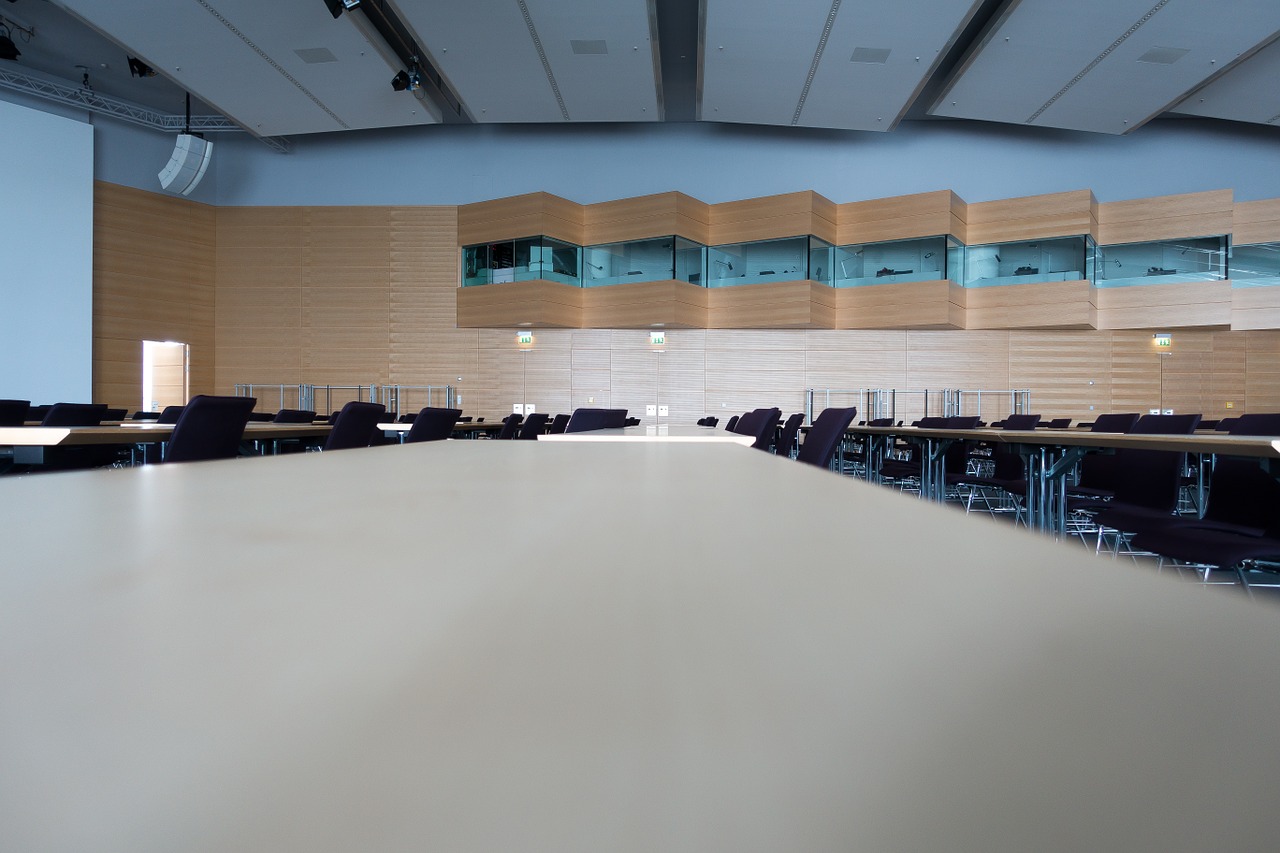
When people think of acoustic design, many envision the classic look of egg cartons and mattress pads stapled to their walls. It’s not something that gets them super excited.
In fact, the mere thought of acoustically treating a room is a bona fide turnoff to many design-minded people.
The best of both worlds
Can you have the best of both worlds? Yes, you can. If you do it right, think about the acoustic design of a hall for performances. Meticulous planning and a focus on acoustic design architecture can give you a breathtaking room that sounds nearly perfect, so imagine how far a little planning can go for you in your projects?
Nowadays, there are ways to creatively treat any space that will look great, no matter what style you are going for. As long as you know a little bit about how sound moves around rooms, you’ll learn how to tackle problematic sound waves without sacrificing the great design you’re after.
The sooner you start addressing the acoustics, preferably in your design phase, the easier it will be to incorporate the materials you want and still achieve a great sounding space.
How does acoustic design affect sound waves?
Whether you use the room for recording music, watching movies, or conversing with friends, you don’t want poor acoustic design to take away from the things you enjoy. Luckily, no matter what you use the room for, the way materials absorb or reflect sound waves remains the same.
If your room has too many hard, flat surfaces, sound waves bounce around and actually get louder. This is called reverberation. Reverberation is simply a buildup of reflected sounds, making the room seem louder and making it harder to hear clearly. You need to mix in some absorbent materials to reduce the effect.
Soft surfaces – not such a smooth effect
Similarly, too many soft surfaces can cause issues. When too many sound waves are absorbed, the room feels acoustically “dead” and unnatural. This can make people feel awkward, as it makes the quiet spaces in normal conversation seem eerily silent.
Your best bet for a good acoustic design is to plan a solid mix of reflective and absorptive materials.
What materials reflect sound waves?
Since you need reflective materials in your design to give you a natural sound, not to mention sturdy construction, it’s good to know which ones reflect sound waves in a way that sounds pleasant.
As a rule of thumb, the harder, smoother, and more dense a material is, the more sound it reflects.
The quality of those reflections, though, is not equal across the materials spectrum.
Wood
Wood is an ideal material in design because it looks great and has acoustic properties that help it pull double duty. While wood is softer and more porous than many other materials on this list, it’s still hard enough to be considered a reflective material since it reflects sound waves better than it absorbs them.
Wood reflects sound waves in a way that creates a pleasing ambiance, making it a top choice for audio professionals. It can be painted or stained to give you endless options when it comes to colors, textures, and patterns.
Metal
When looking for hard, smooth surfaces, the metal quickly comes to mind. Not only does metal reflect sound waves, but it reflects light in a way that adds depth and pizzazz to your flat surfaces. It’s a great material to incorporate into your design, but don’t overdo it.
Too much metal will make your room sound chaotic, loud, and echoey.
Concrete
Concrete is an ever-present material in construction, and it’s one that people have mixed feelings about. The cold grey color of concrete makes some people feel like they live and work in an unfinished basement. That doesn’t have to be the case.
Finishing your concrete surfaces with a stain or epoxy can add a dramatic look that can serve as a beautiful backdrop to your overall design. It doesn’t sound quite as good as hardwoods as far as flooring materials go, but finishing concrete is a much more cost-effective solution than adding hardwoods on top of it.
What materials absorb sound waves?
Since rooms are generally built with solid, reflective materials, it’s essential to incorporate softer, more porous materials into your acoustic design to absorb sound waves and keep noise levels manageable.
Acoustic Panels
A great way to break up the large expanse of sound reflecting space created by your walls is to throw up some acoustic panels. Modern acoustic panel design incorporates attractive fabric covers that can match any design aesthetic. You can even have them printed with artwork, pictures, or any other design that you can dream up. The sound-absorbing materials that they are filled with do a great job of absorbing waves and reducing reverb.
If fabric isn’t your thing, not to worry. You can choose perforated wood or metal panels with acoustic backing to keep the natural elements theme going. They can be filled with the same sound-absorbing materials as the fabric panels but give you a different look.
Ceiling Clouds
Since treating the floor can be tricky, your time might be better spent tackling the other elephant in the room. Ceilings can be tough when you’re designing your space. The industrial look of exposed beams and HVAC systems is very popular these days, but the hard surfaces and noisy ducts can add to your audio misery. Luckily, there are awesome solutions.
A great way to maintain the look of the open ceiling while mitigating noise issues is to install ceiling clouds in the room. Since you are suspending them from the ceiling, you can use any shapes you like and hang them at the angle that works best for your needs.
Not only do they absorb sounds from the room below and keep waves from collecting between the beams, but they also absorb sound waves coming from the ductwork, making them much less distracting.
Acoustics vs. Soundproofing
When we talk about acoustically treating a room, the first thought many of us have is that we are “soundproofing” the room. That’s not technically correct.
There are two main ways we quantify how sound waves interact with surfaces. Noise Reduction Coefficient (NRC) and Sound Transmission Class (STC) are rating systems by which we measure the ability of surfaces to handle sound waves. NRC tells us how much sound energy is absorbed when the waves come into contact with a surface, and STC tells us how much of the sound energy is blocked from passing through the surface.
Materials with good NRC ratings help create spaces more comfortable for conversation or listening to music, and exterior walls with a good STC rating means the neighbors will be bothered less when we do either. Utilizing building materials with good STC ratings is particularly important if you live on a busy road or very close to neighbors, such as in a townhome or apartment.
Understanding the distinction between these two rating scales will help you choose the right materials for the problems you are solving.
Putting it all together
Now that you’re more familiar with acoustic design principles, it’s time to get to the fun part, Planning your project! Use the materials you want, but be sure to strike a balance between hard and soft surfaces. Throw a few rugs down to break up large patches of reflective flooring. Break up your walls with soft furniture and fabric acoustic panels. You’ll be glad you spent the time planning your acoustic design when you finally settle in.




